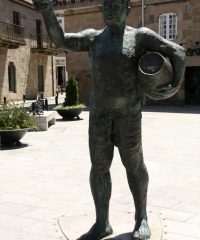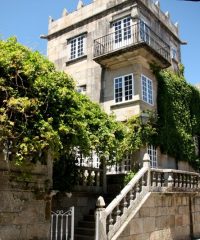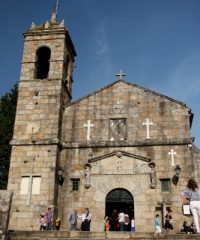- Cambados Town
- Fefiñáns Town
- San Tomé Town
Pedro Bazán de Torres, pastor of Cambados, ordered the construction of the Manor, in the XVII century, restored in the XVIII century by Pedro Bazán de Mendoza, being the residence of his son Pedro Pablo Bazán de Mendoza, famous translator of…
Bronze piece made by Lucas Míguez to mark the 50th anniversary of the death of the sculptor in 2011.
The Path of A Calzada is the natural link between ancient villages of Fefiñáns and Cambados . It was built in 1852 with stones from the old convent of San Francisco and later the trees were planted in 1855.
Built in 1850, and was initially built to house the jail and the court of the judicial district of Cambados.
Cambados, known as the wine capital of Albariño, stood in the square on the 50th anniversary of the wine festival, a bronze statue made by sculptor Francisco Leiro, dedicated to Bacchus, god of wine in Roman mythology.
Data of XVII century, and is an excellent example of what we have been and are the noble houses of Cambados. Stresses the crenellated tower of the 60s and shields different family lineages, such as the coat of arms of Feijoo, Sotomayor, and…
Built in the XIX century, highlighted by the decoration of the facade, clear shades of neo-baroque, with numerous forms of scallop shells.
Old “Praza da Constitución”, this was the place where stood the first building of the town hall, until he moved in 1873 to the current location.
Located very close to the Alfredo Brañas square, Fariña House belonging to a old attorney, Luís Fariña, its façade features a sleek coat of arms of the founders: the Figueroa, the Valladares, Sotomayor, among others.
Founded under the Franciscan order and placed under the patronage of the Immaculate Conception by natural marriage from Villaxoán of Juan Daval and María Pérez in 1588.










